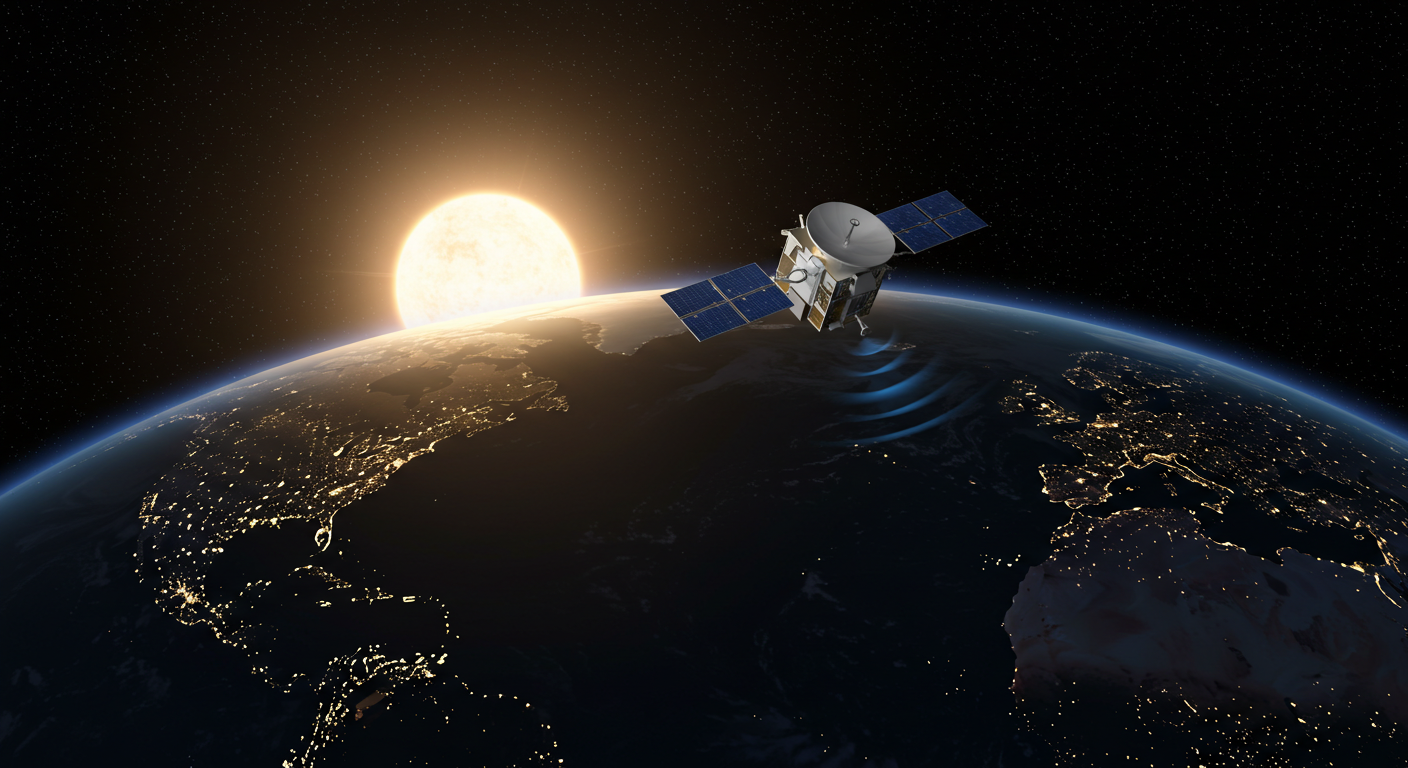Space-Based Solar Power: Beaming Energy to Earth Wirelessly
As the global population grows and electrification expands across sectors, the demand for clean, continuous power sources is increasing. One of the most visionary ideas gaining momentum is space-based solar power (SBSP) — the concept of collecting solar energy in space and wirelessly transmitting it to Earth.
This futuristic idea is becoming more realistic thanks to advancements in wireless power transfer (WPT), particularly through radio frequencies. At WARP Solution, we are at the forefront of RF wireless charging technologies that enable safe, long-range energy transmission. While our current focus is on Earth-based applications, our core technologies share strong alignment with those being explored for SBSP.

What Is Space-Based Solar Power?
SBSP involves placing solar panel arrays in geosynchronous orbit, where they can continuously harvest sunlight without atmospheric interference. The energy is then converted into a microwave or laser beam and transmitted wirelessly to a rectenna on Earth, which converts it back into electricity. Unlike traditional solar farms that are limited by weather and daylight, SBSP promises uninterrupted power 24/7. According to the U.S. Department of Energy’s ARPA-E program, microwave transmission for SBSP typically operates at 2.45 GHz or 5.8 GHz, frequencies that are already used in Earth-based RF charging systems. This is the same spectrum in which WARP Solution’s MFMC (Multi-Frequency Multi-Charging) technology operates — safely delivering power over several meters while complying with international SAR regulations.
Real-World Progress and Global Interest
In recent years, SBSP has moved from theory to demonstration. In 2023, Caltech’s MAPLE (Microwave Array for Power-transfer Low-orbit Experiment) mission successfully demonstrated the ability to wirelessly transmit power in space (Caltech, 2023). Japan’s space agency JAXA has already tested wireless microwave transmission from a floating platform to a ground-based rectenna. China announced plans to launch a 1 MW SBSP test station into orbit by 2030, aiming for full deployment by 2035 (China Academy of Space Technology, 2021). The European Space Agency (ESA) is actively evaluating feasibility through its SOLARIS initiative, which explores both technical and economic viability of space-based energy solutions. These global initiatives reflect the increasing viability of wireless power beaming — a core area of innovation for WARP Solution here on Earth.
The Technical Challenges Ahead
Despite its promise, SBSP faces significant barriers. Launching large-scale solar arrays and beam transmitters into space remains costly. Ensuring beam safety, especially over populated areas and air traffic zones, is complex. Efficiency is also a challenge — the conversion from sunlight to DC, then to microwave, and back to AC on Earth results in substantial power loss.
Additionally, public safety and regulatory oversight must address long-term exposure to high-power beams. According to IEEE research, microwave transmission from space must be tightly focused and comply with ICNIRP and FCC exposure standards — areas in which WARP Solution has built significant expertise through our SAR-tested RF systems.
Why It Matters for Wireless Power on Earth
As governments and agencies push SBSP forward, the resulting advancements in wireless energy — including beam control, rectenna technology, and RF regulation — will directly benefit Earth-based applications. At WARP Solution, we view this progress as complementary. Our RF wireless charging technologies already support long-distance, multi-device power delivery across smart environments. As SBSP scales, the innovations it drives will feed back into improved efficiency, safety, and scalability for our terrestrial solutions — from smart logistics to medical IoT.
Conclusion: Bridging Space Innovation and Earth Applications
Space-based solar power could one day deliver clean, continuous energy from orbit. But the foundation for this future is being laid now — by engineers, researchers, and companies like WARP Solution that are solving the challenges of wireless power here on Earth. As the world looks upward for answers, we remain grounded in our mission: building smarter, safer, and more sustainable energy systems, wirelessly.
Have any more questions about RF Energy Transfer? We would like to help you.

